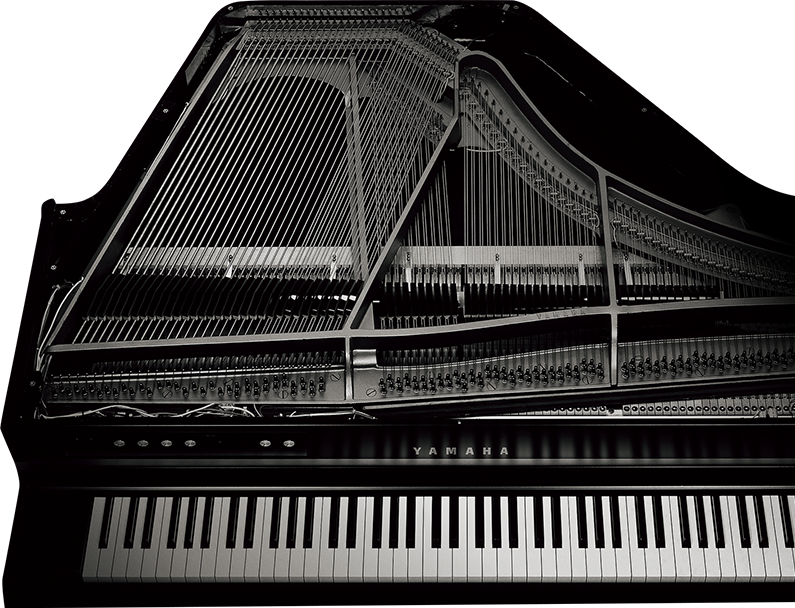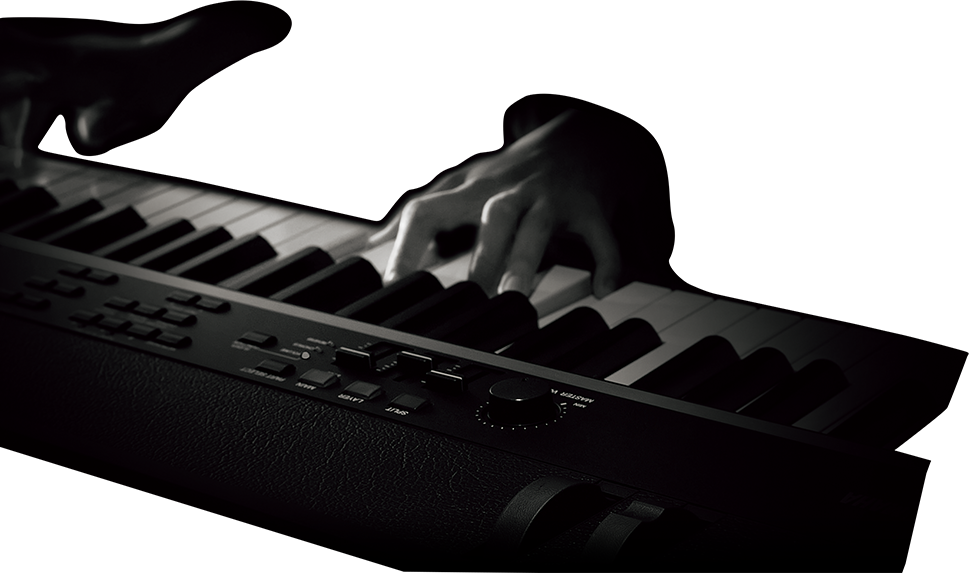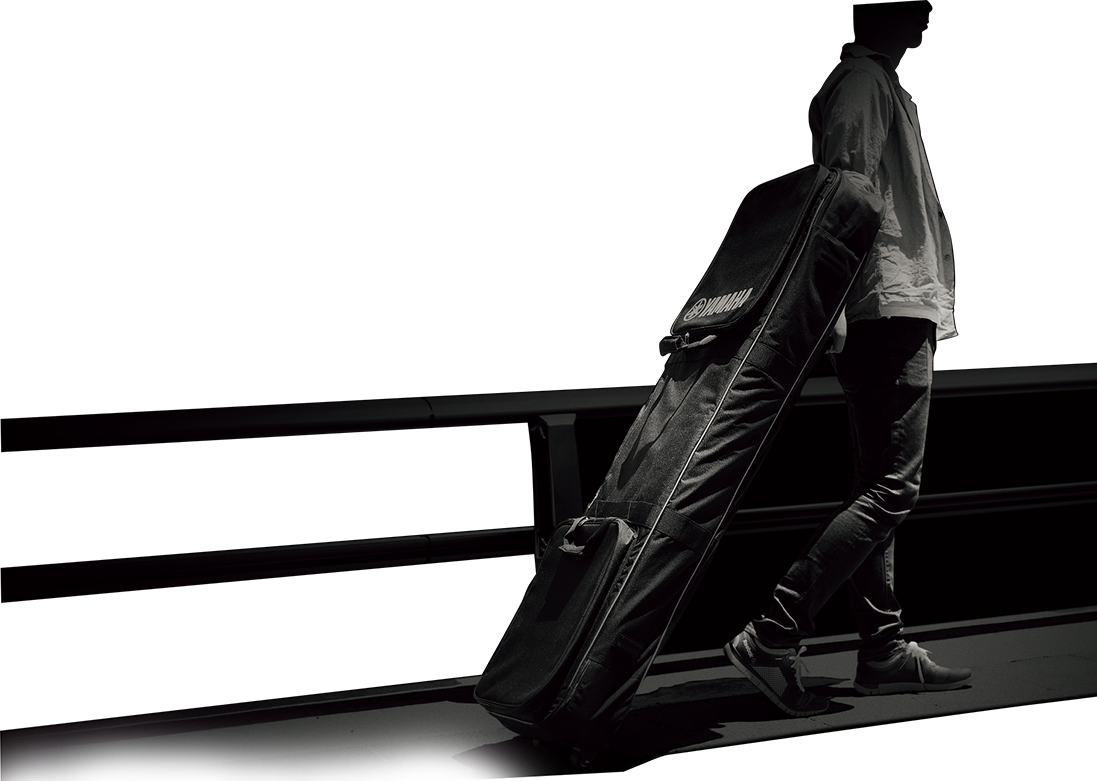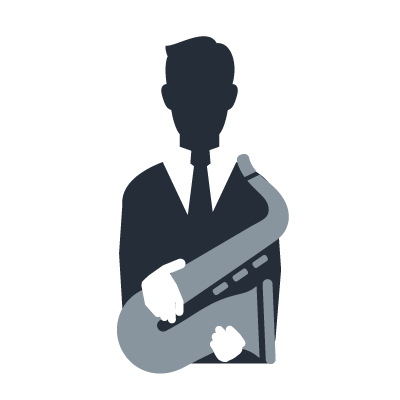CP Concept Site
The instrument known as the stage piano
With its remarkable capacity for expression and a sonic range unmatched by any other musical instrument, the piano plays a major role in the sound of ensembles and bands playing everything from classical music through to jazz and rock. As the latter evolved rapidly in the seventies in particular, giving rise to many sub-genres, the music industry was in desperate need of a piano that could hold its own with the explosive sounds of the electric guitar and could also be quickly and easily set up on stages both indoor and out.
The instrument developed to address this need was aptly christened the “stage piano.”
The quest for a sound worthy of the piano name

The delicate, highly dynamic sound of the piano needs no introduction, and the grand piano represents the pinnacle of piano-making. Stage piano developers constantly strive for sounds of the same high quality as this instrument.
Keys that respond to the passion of the player

While the piano is certainly a struck-string instrument in the strictest sense of the word, the strings are not played directly. Instead, the pianist interacts with these sound-producing elements via the keyboard, and thus the feel and tactile response of the keys is of critical importance.
The mobility to perform on any stage

Responding to calls from pianists for an instrument that they could both practice on and bring on tour, Yamaha’s developers reimagined this instrument from the fundamentals up.
Simplicity and flexibility—convenience in its purest form

The simple action of sitting down at the piano and resting one’s fingers on the keys opens up a universe of unlimited musical possibilities. This, more than anything else, might explain the timelesspopularity of this particular instrument.
A design that resonates with artist and audience alike

The performer looking to dazzle an audience has many weapons in his or her arsenal, but none bigger than the instrument being played. Yet the role of the instrument on stage evolves over time, even in terms of how it looks.
Ever since the CP70 was unveiled in 1976, we have resolutely pursued exciting new ideas in stage-piano design, making extensive use of the most advanced technologies of the day to bring them to fruition.
Not content with grand piano sounds of the highest possible quality, our developers also pushed the limits in terms of other sounds indispensable for these instruments, such as electric piano and pads. In this, we also strove to provide pianists with keyboard feel and tactile response almost indistinguishable from acoustic pianos; meanwhile, major improvements in mobility and durability were gratefully appreciated by musicians and concert staff alike. The usability of our stage pianos meant that anyone playing them could become immersed in their performance almost immediately, and external design elements were fine tuned to both present the overall stage in the best possible light and extract the most passionate performances possible from these musicians
In a continuation of the rich tradition of the Yamaha CP brand, 2019 will see new innovation in Yamaha stage pianos.





